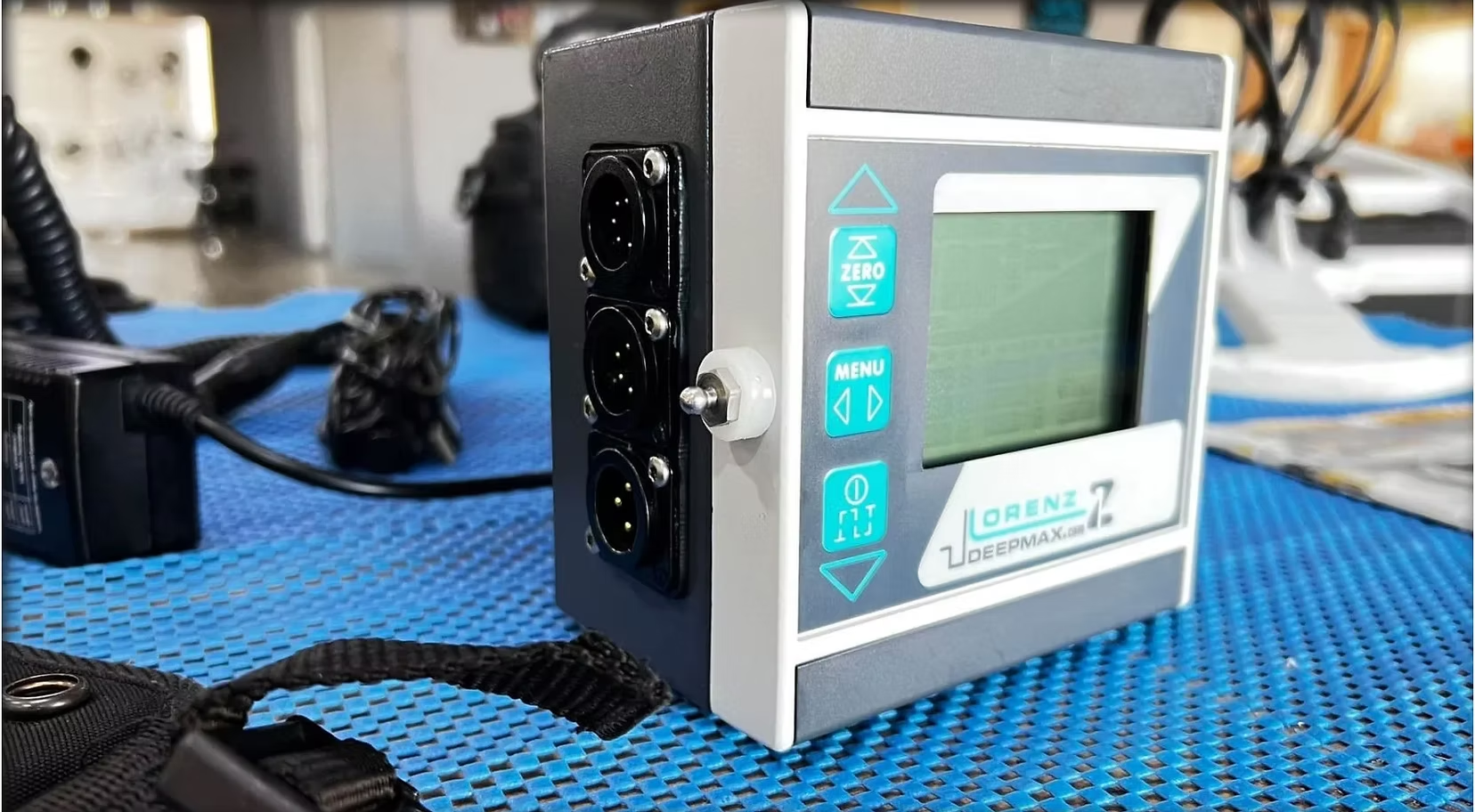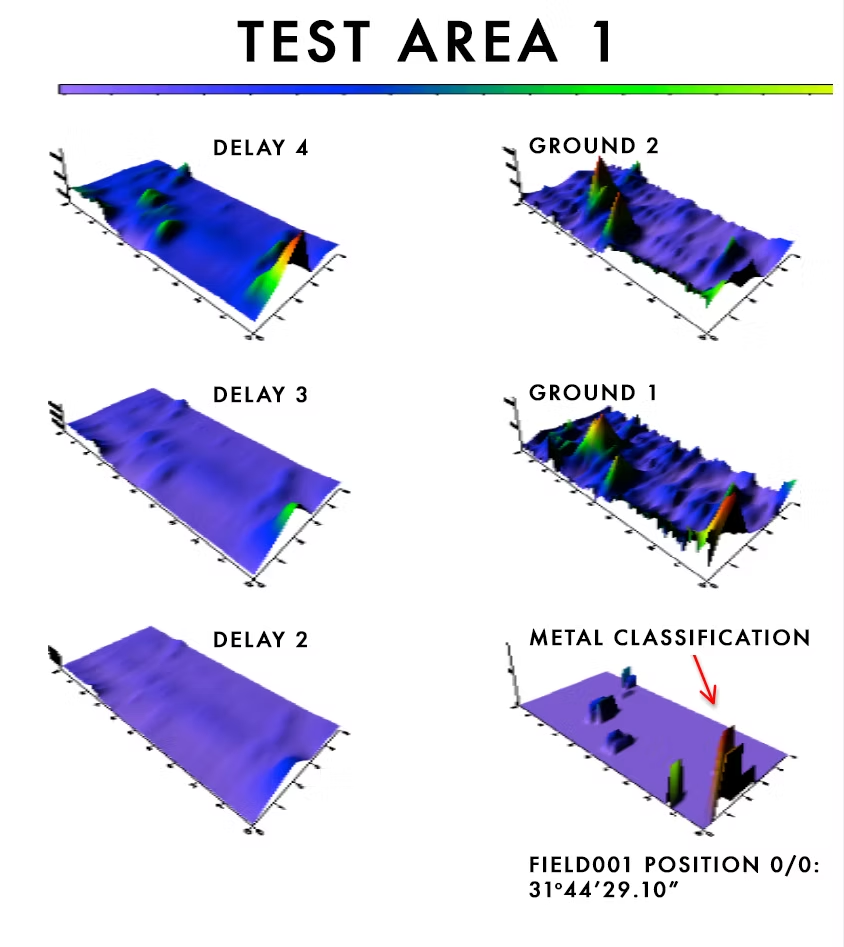Results of Deepscan Testing at Qumran Site
Non-Invasive Electronic Testing at Qumran
On Wednesday, 11 June 2014, electronic testing of four areas in and around the confines of the ruins was conducted at the Qumran National Park. The gentleman authorizing the examination, motivated by his insight and passion for his people, his country and the history of his nation, conducted a simple exploratory test of the grounds with highly accurate non-invasive equipment to determine if a more exhaustive examination of the Qumran complex was justified prior to approaching the governing officials and the people of Israel for a formal and complete examination of the ruins and surrounding terrain.
Equipment Used - the Lorenz Deepmax Z1
The examination conducted was facilitated by an electronic device (the Lorenz Z1) acknowledged as one of the best on the market for identifying large hordes of metals at depths of 1-15 meters or more. Not only will the device detect metal, it discriminates between ferrous and non-ferrous metals (ferrous meaning metals containing iron and non-ferrous meaning metals such as copper, brass, silver and gold).
The LORENZ DEEPMAX Z1 utilizes some of the newest developments in the field of Pulse GBS (Pulse Ground Balancing System) metal detectors required for maximum efficiency. It is one of the most sensitive and stable metal detecting devices of its kind presently available. The LORENZ DEEPMAX Z1 is the result of many years of research and development.
The Pulse GBS is especially suitable for searching at depth. The performance of this electronic device is almost unaffected by salt water, most types of mineralized grounds or temperature changes. Specially designed electronics cancel out signals from the ground while offering stable signals from the metal objects. The DEEPMAX Z1 is therefore a reliable tool to locate at great depths even under the worst environmental conditions.

A new improved circuit design suppresses interference from power lines and a power pulse technique produces very accurate signals to obtain very high detection depths.
The LORENZ DEEPMAX Z1 is a high-quality specialist detector and designed to be used with both, small or large coils. Large coils offer extreme depth capabilities for big metal objects because of the strong and deep penetrating magnetic field produced.
During the 11 June test a large two-meter coil was used. The Pulse GBS (Pulse Ground Balancing System) principle has got the advantage of using large diameter coils and high transmitting power. This is especially necessary when searching at depth.
A special adaptation circuit has been added to the detector to facilitate different coil systems automatically. This ensures extreme depth capabilities with any coil connected. Enlarging the search coil diameter to two meters increased the sensitivity of the device to bigger objects while decreasing the detection of troublesome metal fragments. The large two-meter coil offers very high detection ranges. Even in difficult soils where magnetic iron oxides are present the LORENZ DEEPMAX Z1 will offer extreme depth capabilities for both ferrous and non- ferrous metal objects when the Ground Balancing System is in use. The high sensitivity of the DEEPMAX Z1 to non-ferrous metal objects like gold, silver and copper together with the new metal analysis makes this detector an outstanding device for the items and vast quantities listed on the Copper Scroll.
The Areas Tested at Qumran and the Surrounding Terrain
The first area tested was just north of the large building with the sloping walls at Qumran's entrance, as described on the Copper Scroll.
In fact, there appears to be large amounts of non-ferrous metals at three of the four locations tested. Before examining the graphs produced by the Lorenz Z1 it is important to understand that the images produced, according to the Lorenz expert, the Metal Classification Chart is “very reliable” if there were no anomalies. None of the events the representative named were evident during any of the scans so, the data produced in the charts below appears to be reliable. That being the case, there appears to be “non-ferrous” metals under the surface of Qumran in the ruins and at the location named on the Copper Scroll as a “cave with a buried entrance” about 300 meters northwest of the ruins. The “cave with the buried entrance,” according to most scholars, houses incredible amounts of precious metals and, if all factors were functioning properly the day of the scan, the test above and slightly west of the suspected cave entrance produced strong signals indicating the largest amounts of non-ferrous metal.
Six maps are generated for evaluation purposes yet the reader will see 12 maps for each Test Area. Six three dimensional maps on the first page will correspond to the six two dimensional maps on the following page for each Test Area. Although the maps are all significant for evaluation, for our purposes the Metal Classification chart is the most important (bottom right on each map).
The information pertaining to the very important Metal Classification chart below is taken from the Lorenz Manual for the reader's examination and comparison with the maps created. Use the chart with the "Metal Classification" chart only.
Color Indications on the "Metal Classification" Chart
Purple _______________ No Metal or inadequate signal
Blue _______________ Thin Non-ferrous Material
Green _______________ Small Ferrous Items
Yellow ______________ Ferrous Metal Objects
Orange ______________ Non-Ferrous Metal Objects
Red _________________ Large Non-Ferrous Metal Objects
